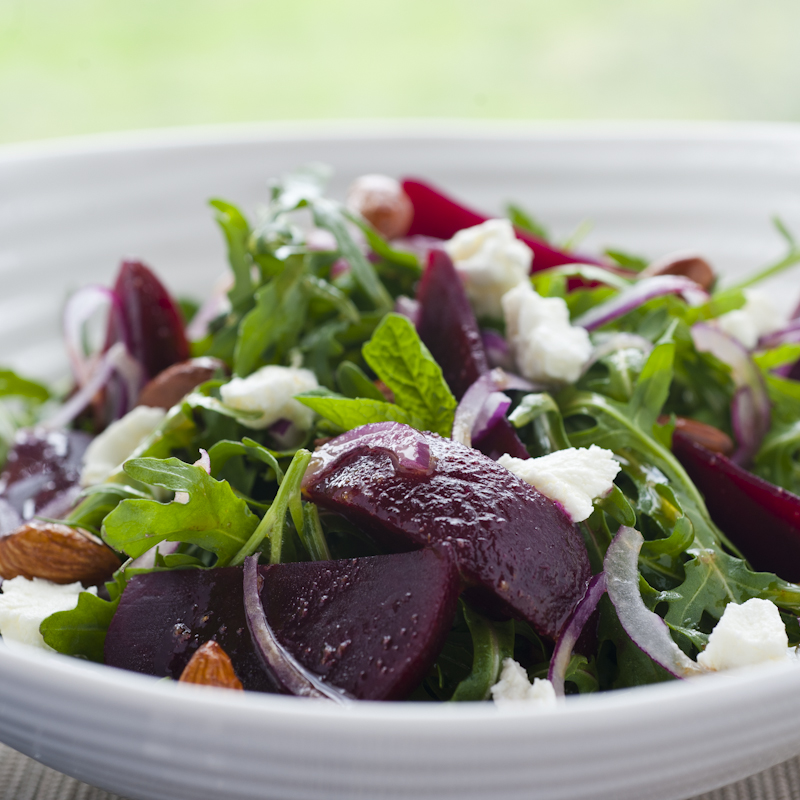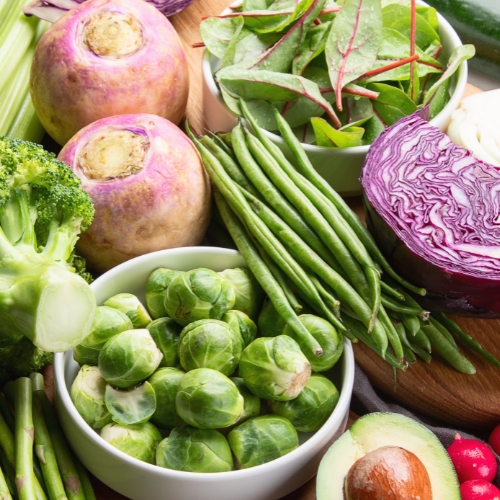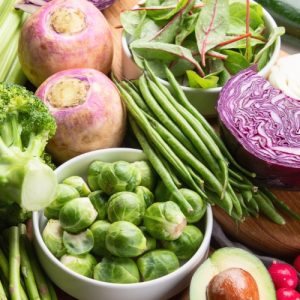Much like the plants in our gardens, the types of foods we grow naturally are also influenced by the changing seasons. Certain foods are at their most nutritious at certain times of the year. For example, salads are a great addition to your lifestyle in spring.
By knowing which foods we can harvest and make part of our daily eating, we can tap into more natural goodness.
Nutritionist and Naturopath Tracey Loughran has spent her career cultivating a deeper understanding of seasonal-based eating – from knowing which foods are most nutritious during specific seasons to sharing recipes that make it easier for us to enjoy those benefits in all kinds of meals.
In embracing the nutritional power of seasonal-based eating, you invite your body to benefit most from nature’s food sources, even if you’re not harvesting the ingredients yourself.

Much like the plants in our gardens, the types of foods we grow naturally are also influenced by the changing seasons. Certain foods are at their most nutritious at certain times of the year. For example, salads are a great addition to your lifestyle in spring.
By knowing which foods we can harvest and make part of our daily eating, we can tap into more natural goodness.
Nutritionist and Naturopath Tracey Loughran has spent her career cultivating a deeper understanding of seasonal-based eating – from knowing which foods are most nutritious during specific seasons to sharing recipes that make it easier for us to enjoy those benefits in all kinds of meals.
In embracing the nutritional power of seasonal-based eating, you invite your body to benefit most from nature’s food sources, even if you’re not harvesting the ingredients yourself.

what does it mean to eat seasonally?
Eating seasonally means recognising which food sources are at their most nutrient-rich at specific times of the year, and considering these ingredients in the recipes you create and meals you eat. Not only are foods often more nutritious when they’re ‘in-season’, but they’re also usually fresher and more flavoursome.
While it might seem obvious to eat foods when they’re in season, how we consume food means it’s not always so clear-cut. “If you are a gardener, you’re likely to be eating seasonally anyway, harvesting what is ripe as it happens”, says Tracey.
“If you’re a city-dweller with little space or have space but not time, it’s easy to lose track of what is in season. Foods are kept artificially ripe, or brought on early using chemicals, then presented perfectly in the supermarket”.

what are the benefits of eating seasonally?
You can often taste the benefits of eating seasonally from the first bite. This is because when foods are in season, they often taste better and fresher. As a result, eating in line with the seasons means inviting a more diverse array of nutrients into our diets.
More often than not, these nutrients reflect the needs of our bodies at specific times of the year. For example, vitamin A and C in winter, or hydration in summer. It means we’re taking advantage of opportunities to enrich our bodies when natural food sources are most beneficial while also treating ourselves to a more naturally varied meal plan.
Eating seasonally offers more than just physical benefits too. Tracey explains that, “There is also the emotional benefit of feeling more connected to the land and the people that grow your food, and the environmental benefit of reduced packaging”.
what are the benefits of eating seasonally?
You can often taste the benefits of eating seasonally from the first bite. This is because when foods are in season, they often taste better and fresher. As a result, eating in line with the seasons means inviting a more diverse array of nutrients into our diets.
More often than not, these nutrients reflect the needs of our bodies at specific times of the year. For example, vitamin A and C in winter, or hydration in summer. It means we’re taking advantage of opportunities to enrich our bodies when natural food sources are most beneficial while also treating ourselves to a more naturally varied meal plan.
Eating seasonally offers more than just physical benefits too. Tracey explains that, “There is also the emotional benefit of feeling more connected to the land and the people that grow your food, and the environmental benefit of reduced packaging”.

which foods are most beneficial in each season?
Depending on the time of the year, the plants we eat store their energy in different parts of their structure. Take a beetroot, for example, which stores energy in its bulb in winter and then the leaf in the spring. This reflects the way different foods offer different benefits depending on the season.
summer foods
It’s no surprise that in the hottest months, hydration is key. This is why leafy above-ground vegetables like lettuce, kale and spinach are ideal for this time of year. They also provide us with a natural source of vitamin K, potassium and calcium – all of which support more movement as we’re out and about during the warmest time of the year. Fruits like grapes, melons, bananas and strawberries are all incredibly nutrient-rich at this time too.
autumn foods
As the weather begins to cool, a bounty of nutritious produce comes into its prime. Root vegetables, like carrots, celery, sweet potato and rhubarb provide the nutrients we need for our immunity – such as vitamins A & C. In your fruit basket, you’re likely to find apples in their prime, a bounty of juicy tomatoes, plus figs, pears, mandarins and more to provide new and exciting opportunities in your meal prep.
winter foods
When the year is at its coldest, citrus fruits like lemons and oranges also ripen, delivering us the extra vitamin C we need for a healthy immune system while providing plenty of zest for the recipes we’re preparing. Vegetables like broccoli, cauliflower and brussels sprouts are all in season, making hearty and nutrient-rich additions to soups, stews and other recipes tailored to warming our spirits during those cold winter evenings.
spring foods
Spring is often associated with new beginnings and the blooming of natural life. Our food supply at this time is no exception. As the weather warms up again, foods like avocados, asparagus and sugar snap peas are at their ripest and most enriching. You can complement these vegetables with fruits like bananas and lychees and the return of the much-loved mango, which offers almost half your recommended daily intake of vitamin C in a single serving. You might like to consider blending up your own smoothie.
how can I eat more seasonally?
Much like the produce, the opportunities to eat more seasonally are abundant. Beyond this, knowing which foods are most beneficial in certain seasons means you can tailor your food shop so that more seasonal foods are in your shopping basket.
Tracey encourages thinking outside the typical supermarket square to form a deeper connection to and awareness of your food supply.
“Shopping at farmers markets, getting to know growers, or even setting up a community food-swap network can all be wonderful ways to get closer to the source of the food you are eating”, Tracey says.
Once you’ve established that connection – and you’re more familiar with which foods are in season – you’ll invite greater wellness to your table in each and every meal.

